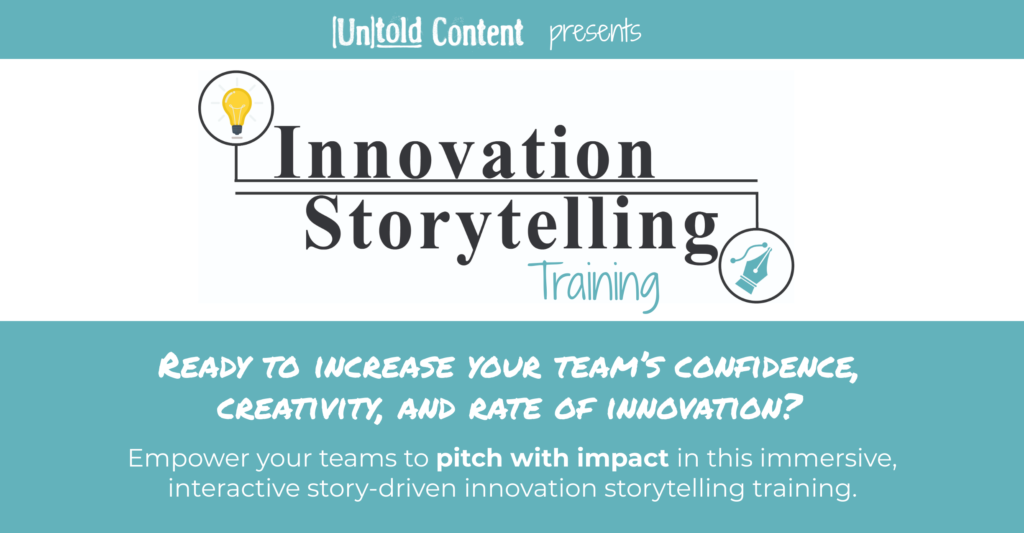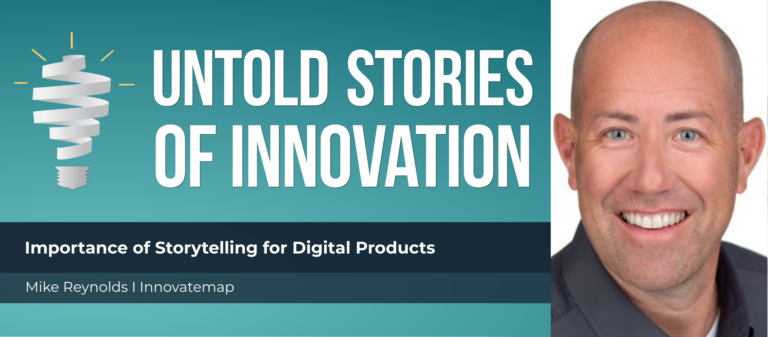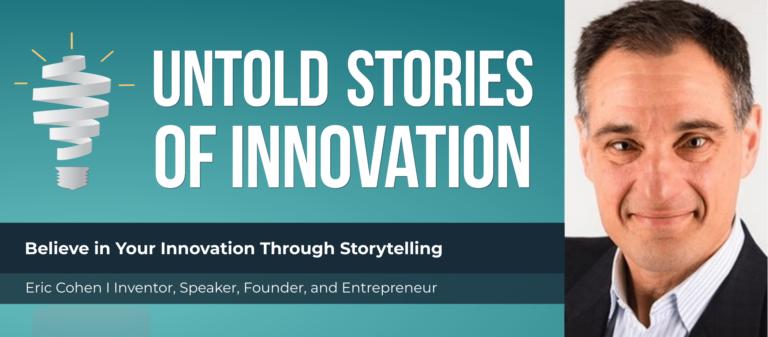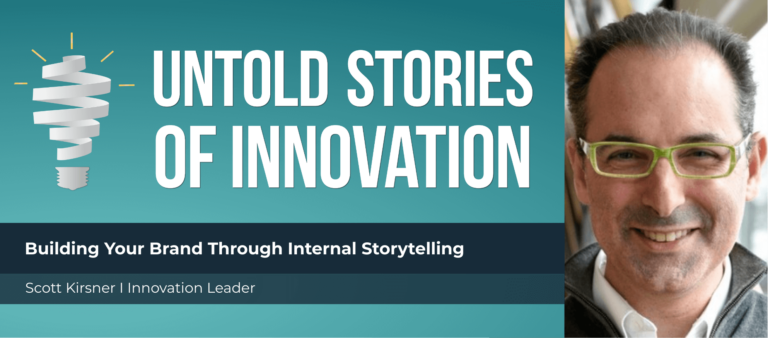The Untold Story of Blood with Dr. Richard Benjamin and Obi Greenman of Cerus
Untold Story of Blood - Untold Stories of Innovation
“What we've learned is how to more appropriately use blood when it's really needed and then not to use it when it's not really needed. And so we believe that our products, by making them more available and safer, give physicians some confidence in the use of their blood products as well.” Untold Story of Blood – Dr. Richard Benjamin, Chief Medical Officer at Cerus Corporation
From today’s episode you’ll learn:
Every year, public health is threatened by unknown mosquito-borne diseases that tend to be transmitted in the warmest areas of the U.S., including states such as California, Florida, and Texas. Certain mosquito-borne diseases, like Zika, can easily be transmitted via blood transfusion, which is why Dr. Benjamin, chief medical officer of Cerus, has worked with hospital systems and blood centers around the world to reduce the risk of transmission through pathogen reduction, which ensures that hospital patients are receiving clean, disease and virus-free blood.
Not all blood in the U.S. is pathogen reduced, but the FDA has recommended this method as a safety measure. The safety of the blood supply can make or break our healthcare system as we prepare for the next outbreak. Dr. Fauci published a paper recently outlining the importance of understanding and anticipating devastating disease emergencies caused by animal hosts. Today, we talk with the CEO and CMO of Cerus Corporation to understand new technologies for blood sterilization and pathogen-reduction—and the powerful ways they can help prevent or lessen the negative impacts of pandemics. The Untold Story of Blood.

Dr. Richard Benjamin is Chief Medical Officer at Cerus Corporation / Former Chief Medical Officer of the American Red Cross. As an experienced Chief Medical Officer with a demonstrated history of working in the biotechnology industry, Dr. Benjamin is skilled in Transfusion Medicine, Oncology, Blood Bank, Laboratory Medicine, and Healthcare. He has also served on the DHHS Secretary’s Advisory Committee on Blood Safety and Availability in the U.S. Dr. Benjamin is an Adjunct Associate Professor of Pathology at Georgetown University and author of 100 peer-reviewed publications.

William “Obi” Greenman is the President and Chief Executive Officer of Cerus, a global blood products company focused on safeguarding the world’s blood supply. His commitment to global health issues and improving blood safety and availability for patients has led to career highlights including building Cerus’ European operations, four patents in the fields of transfusion medicine, immuno-oncology and allogeneic stem cell transplantation, overseeing the FDA approval for Cerus’ INTERCEPT platelets and plasma products, and establishing a partnership with the Swiss Red Cross to develop safe whole blood transfusion options for sub-Saharan Africa.
untoldcontent.com/trainings/innovation-storytelling-training
TRANSCRIPT
This episode is powered by Untold Content’s Innovation Storytelling Training. Increase buy in for your best ideas in this immersive and interactive, story-driven experience. Where your teams refine storytelling techniques for their latest projects, prototypes and pitches—and get inspired by 25 epic examples of impactful innovation stories.
Katie Trauth Taylor: [00:00:04] Welcome to Untold Stories of Innovation, where we amplify untold stories of insight, impact, and innovation. Powered by Untold Content. I’m your host, Katie Trauth Taylor.
Katie Trauth Taylor: [00:00:19] Every year, public health is threatened by unknown mosquito-borne diseases that tend to be transmitted in the warmest areas of the United States, like California, Florida, and Texas. Certain mosquito-borne diseases like Zika, for instance, can easily be transmitted by blood transfusion, which is why Dr. Benjamin and Obi Greenman of Cerus Corporation have worked with hospital systems and blood centers around the world to reduce the risk of transmission through pathogen reduction, which ensures that hospital patients are receiving clean disease and virus free blood. This is an urgent and important part of the medical conversation right now, especially as we are all much more attuned to pandemics and all of the impacts that they can have on our society. Dr. Benjamin is chief medical officer of Cerus Corporation, and Obi Greenman is president and CEO of Cerus. Thank you both so much for being on the podcast today.
Obi Greenman: [00:01:12] Thank you for the invitation.
Katie Trauth Taylor: [00:01:14] So, Dr. Benjamin, you’ve spent 13 years as chief medical officer for the American Red Cross and then, of course, have played an integral role at Cerus. We’d love to know. You know, it’s interesting, our team started preparing for our conversation with both of you today. And we saw, of course, the American Red Cross focuses on disaster relief and provides a staggering 40 percent of the nation’s blood and blood components. Can you tell us more about the innovations that you’re both currently working on at Cerus and why they’re so critical in today’s time.
The Untold Story of Blood: Blood Innovation and Blood Safety
Dr. Richard Benjamin: [00:01:49] Safe blood is something we all expect. But after the HIV epidemic, I think we all have this nagging fear that perhaps what we’re not getting is as safe as we would like it to be. The Cerus corporation has developed a series of technologies to actually almost sterilize blood products so that you can treat a blood donation after donation. And if there’s anything in the blood that could harm the patient from an infectious disease sense, we can inactivate it and protect patients. That innovation, for me, is the culmination of almost a lifelong journey from my days when I was a medical director of one of the Harvard blood banks and actually saw patients that were affected by bacterially contaminated platelets or hepatitis C, it was so impacted my time when I served as chief medical officer for the American Red Cross, where I could see I was responsible for the safety of almost half of the country’s blood supply. The Untold Story of Blood. And you would see reports coming in. They weren’t that common, but they were common enough to know that there were still problems with diseases such as West Nile virus and Zika and other infectious diseases. So Cerus, really, to my mind, provides a solution that can really protect patients. And that’s what really motivates and drives me.
Katie Trauth Taylor: [00:03:21] Can you share? Thank you. Yeah, go ahead.
Obi Greenman: [00:03:24] Sorry, just add to that. I think the… a lot of the employees at Cerus, you know, have a similar experience to Richard [Benjamin] where we were really impacted by the HIV and hepatitis epidemics back in the 80s and 90s and the impact on blood safety at that time and the fear that existed for both physicians and patients who were receiving blood components about what might be in a blood unit. And so the founder of the company, Dr. Larry Corash, who was at UCSF in the 80s, you know, really embodies that kind of spirit of innovation. How do you solve this problem prospectively so that with future epidemic threats, you don’t have risks to the blood supply and you ensure its availability? I had a similar experience in my early career at Baxter Healthcare, where we were making blood derived therapeutics for diseases like hemophilia, but also for other patient populations that were immune-compromised. And the big fear at that time was, are we going to transmit an unknown virus in our blood blood drive therapeutics? And so it really has been a lifelong dream for many of the employees at Cerus to try and come up with a new foundational strategy for blood safety and availability.
Katie Trauth Taylor: [00:04:39] It’s such important work, can you tell us about the culture of innovation inside Cerus and what led your teams to get to this point of discovering some of these new would you call them technologies that you’ve produced or processes for cleaning and….?
Obi Greenman: [00:05:00] I’d say it’s a technology that is basically a photochemical approach to sterilize blood, as Richard mentioned, and our main focus is on the clinical benefit for patients. And I think, as I mentioned before, there’s a lot of sort of history at the company about disease transmission through blood components and how we prevent that. I think the impact also just the scope of what we’re doing on patients globally is huge because there’s so many patients who get blood components on a daily basis. And it is also estimated that 40 percent of the population will get some kind of blood component or blood drive therapeutic in their lifetime. So our main focus is on the clinical benefit that we can confer to patients and also really providing our customers, which are blood centers around the world, that process by components they collect and process them before they’re distributed to hospitals, to help those blood centers do whatever they can in their power to ensure the safety and also the availability of blood.
Dr. Richard Benjamin: [00:06:07] Maybe I can add to that, you know, at Cerus, I’ve met a really dedicated group of people who really see the patient as the end result of our technologies. The Untold Story of Blood. We… There’s this desire to really do the best to develop the best technologies, the simplest and cheapest technologies that can be implemented to protect patients. And that’s one of the driving forces. Why is the company that’s now almost 27 years old, has just persevered and succeeded in expanding its footprint worldwide into almost every continent in the world now.
Katie Trauth Taylor: [00:06:51] And it’s critically important, like I mentioned, when we first kicked off this conversation, for mosquito-borne diseases like Zika, which can be transmitted via blood transfusion, what other diseases should we be paying attention to that this innovative work can help to reduce the likelihood that that pathogen is passed through blood?
Dr. Richard Benjamin: [00:07:13] Let me take that one. When I joined the American Red Cross in 2002, the first Thanksgiving after I arrived, I remember vividly reading an article in The New York Times of a number of patients who got West Nile virus through a blood transfusion, including one that died of the West Nile, was very current at the time when the East Coast and we just didn’t know or dreamed that it was transmitted by blood. And we got a rude shock that weekend because there was a clear case of transmission. And we waited a year before a test was available for West Nile virus. And we know that dozens of patients were infected with West Nile. That’s a mosquito-borne disease during that year. Subsequent to that, when I was working with the American Red Cross, we collected and distributed blood in Puerto Rico and they had outbreaks of first Dengue and then Chikungunya and then finally Zika. And, while I was chief medical officer, I actually approached Cerus Corporation and said, what could they do to help us in Puerto Rico? So one of the first places in the US to use the Cerus technology was actually the American Red Cross in Puerto Rico, where we implemented it to protect patients against chikungunya, which is a mosquito-borne disease. And then, of course, two years later, we had Zika come through and sweep Puerto Rico, the Caribbean islands, Brazil, and the southern parts of the US. Just to make it very personal, there actually is a Dengue mosquito-borne virus outbreak happening today in southern parts of Florida and Miami is actually local transmission of dengue, again in bloodborne pathogens that we don’t test for in the blood supply. So it is very current.
The Untold Story of Blood & the Unknown Story of Blood
Katie Trauth Taylor: [00:09:23] And so it sounds like there’s an ever-present need for continuing to understand emergent diseases and pathogens and also to better understand the ones we think we already know.
Dr. Richard Benjamin: [00:09:35] Absolutely. Another great story is Dr. Larry Corash founder. Back in the late 80s, one of the first experiments he did was with non-A, non-B, hepatitis, he was working at the National Institute of Health and Dr. Harvey Alter, who won the Nobel Prize this year for his work in non-A, non-B Hepatitis, Larry Karesh had the opportunity to try the technology in chimpanzees with Dr. Alter. And so the tie to a hepatitis C and the work at the NIH has been very strong through the years at Cerus. And Dr. Alter has written some very strong supportive pieces on the technology and the need for pathogen reduction. So we were very pleased this year when we saw that our colleague, because I think many of us know him well, actually was awarded the Nobel Prize for that work.
Katie Trauth Taylor: [00:10:37] That’s incredible. Congratulations to that. It’s amazing how innovation stories can build over the years and interweave and overlap. The Untold Story of Blood. I have a burning question I’m sure most listeners are curious about, which is what about COVID-19? What do we know about its ability to transmit through blood? And is this something that the risk can be reduced in some of the technologies that you’ve created?
Dr. Richard Benjamin: [00:11:07] Maybe I should take that.
Obi Greenman: [00:11:09] Yeah, you should.
The Untold Story of Blood: COVID-19 and Blood Transmission
Dr. Richard Benjamin: [00:11:10] You know, and COVID broke out in southern China at the end of last year. That was one of the first questions they asked is what about the blood supply? And the truth is, we didn’t know for a long time. There have been a couple of publications that have looked at a small number of donations. And we know that if it happens, it’s infrequent. We do know that when patients are very, very ill, they can have the virus in their blood. But very, very ill patients aren’t blood donors, the donors that are asymptomatic are the ones you’re worried about and it is in the blood, but very rarely. And so it’s not considered to be a major blood threat. But let’s be clear that that was pure luck. The next pandemic we have could be just as well a blood transfusion transmitted without us knowing it, and it takes many, many months after a disease is discovered to actually work out what the risks are. During that period, patients may be exposed and may be at risk.
Katie Trauth Taylor: [00:12:19] Which is likely why pathogen reduction is so important and ideal in order to help prevent against that or at least have a safety net available so that we’re not having to, you know, unknowingly put people in danger through the blood supply.
Dr. Richard Benjamin: [00:12:41] Absolutely.
Obi Greenman: [00:12:42] Indeed. That’s increasingly been recognized also by the FDA. We just were awarded a 11 million dollar grant from the FDA to develop the next generation pathogen reduction technologies because they believe we’re on the right path to safeguarding the blood supply for red cells, platelets and plasma. But having a whole blood pathogen activation technology would also be helpful. And I think just in light of pandemic preparedness, a lot of government agencies like the FDA, but also US BARDA, which you’ve probably heard about, which is funding a lot of the COVID-19 vaccine development, has also provided Cerus with a lot of money over the years to support the innovations that exist in the company.
Katie Trauth Taylor: [00:13:26] Congratulations, it’s exciting to see it getting supported, and I’d love to know, too, can you share with us a little bit more about the innovation story, the path that brought you to the point where this technology is today? Was it clear, you know, going from point A to point B? Was it a circuitous path? How did the story change over time?
Obi Greenman: [00:13:49] I think, you know, the technology was originally developed out of both UCSF with Dr. Larry Corash, who we’ve already mentioned, but also a number of scientists out of UC Berkeley who were actually photo chemists. And so they were developing different chemistries that are activated by UVA light. It’s actually an interesting sort of natural phenomenon that plants have these phytochemicals in them and they’re sort of a natural insecticide. So when insects eat the chemicals and then go out in the sunlight, that actually kills the insects and sort of prevents the plants from being eaten. And so the innovation story really was, well, how do you take that and derivatize, those compounds into something that ultimately could inactivate pathogens in blood components without inactivating the blood components themselves? The Untold Story of Blood. And that was developed in the early 90s and, you know, took a while to have something that easily could be configured into blood center operations around the globe. Our technology today is implemented in both small blood centers like in Tahiti to large blood centers in the United States. The American Red Cross, for example, but, you know, it really took a while for the technology to be broadly implemented and is still, in fact, being sort of gradually deployed. So it’s not a foregone conclusion that pathogen activation should be the foundational strategy for blood safety. I think the evolution of testing over time, you know, and its efficiency works. But as more and more pathogens enter the blood supply, it gets harder and harder for … to have a system that actually is sustainable. And so that’s again why we see agencies like the Food and Drug Administration really, you know, looking at pathogen activation as sort of the definitive safeguard for the long term. To maybe add a little bit to the innovation story, you know, as the company has rolled out the technology, we obviously are always on the lookout for how do we improve the technology? How do we iterate on it so that it’s easier to use and more cost effective? But also we see opportunities for partnering with our blood centers to try and create solutions for specific patient needs. And one of those is a product that we hope to have FDA approval on by the end of this year. It’s a product called cryoprecipitate, which is used in critically bleeding patients. And the problem that we were trying to solve for physicians, like trauma doctors and ob-gyn physicians who treat maternal hemorrhage, is that they don’t have the product readily available because it’s it’s a frozen product typically, and it’s also not configured in the dosage that makes the most sense. And so at the company we figured, well, if we can use our technology to sterilize the component, maybe they can sit out at room temperature for a week and then it’ll be readily available whenever a physician needs it for a patient who might be dying from blood loss, from a car accident or from childbirth.
Katie Trauth Taylor: [00:17:04] Wow, that’s absolutely incredible. So is that… And did that… Is that happening now?
Obi Greenman: [00:17:12] Yeah, no, it is. So we’ve submitted to the FDA for the approval of the product and we hope to launch it by the end of this year, early next year. And it’s one of those things that we believe will really change patient outcomes, because it’s broadly known that the leading cause of death for people under the age of 40 years old is traumatic blood loss, either from car accidents or gunshots or maternal hemorrhage, which is a big cause of mortality for women of childbearing years. So and the goal there is to really intervene as early as possible when the patient is losing a lot of blood so that you can prevent the need for even more blood components being transfused.
Katie Trauth Taylor: [00:18:01] You know, when you talk about technologies that are so… Have such meaningful impacts on society and at the individual level, my next question might seem like it’s maybe easy to answer, but I was curious to know how you connect your audiences to the impacts made through your innovations. The Untold Story of Blood. And maybe this is a good time to ask: Who are the audiences that you speak to as you work to put your technologies out into the world? And how do their different needs, you know, impact the way that you connect with them and help reveal what the… What impacts are made possible?
The Untold Story of Blood: Innovating for Patients
Obi Greenman: [00:18:39] Yeah, I’d say that the main audience for us and the story that we’re telling are blood centers and hospitals and so, you know, for blood centers, they have a very difficult job. I mean, Richard probably can expand on this better than I can. But, you know, the necessity of maintaining the blood supply with all the variations associated with bringing donors in the door, making sure that they’re eligible due to donate blood, making sure that you then can process those blood components and then distribute them across all the hospitals in the United States. That’s a big job. And so what we’re hoping to do is show them that with a technology like ours, at least a lot of their concerns can be addressed, whether it’s donor availability. So a lot of donors, blood donors, are deferred from donation because of concerns about transfusion transmitted disease from mosquitoes, for example. So you have malaria or Dengue or Chikungunya, like Richard mentioned before. So if you’re in the United States and you travel to Mexico for vacation, for example, you are banned from donating blood for that period of time. There are other donor deferrals like tattoos, because the blood thinners and transfusion specialists are concerned about, you know, some kind of disease transmission from the tattoo needles to the donor. And then one that’s gotten a lot of is around gay male donor deferrals, so based upon the history with HIV. And there’s been many decades now in which gay men are not allowed to donate blood. And that’s only recently been modified so that now there’s a three month donor deferral for gay men. And so I think basically what we’re trying to do is take the technology development that we have at Cerus and make it real to these blood centers or hospitals as to the problem that we’re trying to solve for them and also and ultimately for patients.
Dr. Richard Benjamin: [00:20:44] Not only are we trying to make blood safer, but we’re trying to make better blood products. So if in a platelet transfusion, if you don’t need the plasma and you take it out and replace it with an additive solution so that you get fewer allergic reactions to that platelet, but the platelet is just as potent at stopping bleeding, that would be a better product. Obi mentioned cryoprecipitate. The Untold Story of Blood. We haven’t really changed what the cryoprecipitate does, but we make it more available and more readily available to patients when they actually need it. So, you know, it’s an improvement that’s not just in safety, but also in availability and usability of blood. You know that over the last 10 years, there’s been a tremendous move away from transfusion in medical circles. The country actually uses 30 percent less red cell transfusions than we did 10 years ago. And part of that is driven by doctors who are worried about the safety of blood products. And what we’ve learned is how to more appropriately use blood when it’s really needed and then not to use it when it’s not really needed. And so we believe that our products, by making them more available and safer, give physicians some confidence in the use of their blood products as well. So the whole industry around transfusion is, I think, quite rapidly improving. And we are part of that innovation for patients.
Katie Trauth Taylor: [00:22:28] Absolutely. This brings me to a question about transparency, too. To what degree from the… You spoke so beautifully to the way that you need to meet the needs and solve the problems faced by blood centers and hospitals and health systems. And I’m thinking, of course, their mission is always at the end to serve the patient. And from a patient perspective, how much transparency is there around whether the blood that they’re receiving or the blood components they’re receiving are sterilized or have gone through some of these processes?
Dr. Richard Benjamin: [00:23:02] It’s a really good question. You can imagine that when you arrive in an emergency room, having just been in a motor vehicle accident, this is not the thing you’re worried about.
Katie Trauth Taylor: [00:23:14] Right.
Dr. Richard Benjamin: [00:23:14] And will probably only think about three weeks later as you’re lying back in your bed at home thinking, oh, I wonder what happened to those 10 units of blood I required? Where did they come from? Who were the donors? Was it safe? On the other hand, if you’re a cancer patient and you’re getting a transfusion of a platelet product every week or every couple of days, and you know that over the next six months you’re going to require 40, 50 blood products. This is something you have time to think about. The Untold Story of Blood. Today, if you… it very much is dependent on the hospital you go to. Some hospitals use pathogen reduction technologies today and some don’t. And you don’t really have a say in what happens. And that’s one of the unfortunate things about how the system works, is that the ultimate end user is not the person who gets to make the choice or even to understand what the choices could be. So if we could get to communicate with the ultimate end user patients, that would be wonderful. But that’s a difficult thing to do.
Katie Trauth Taylor: [00:24:29] It reminds me of something being certified organic or having other…. Sorry, that’s a terrible metaphor. But yes, I was thinking, you know, fair trade or the other things that people stand behind from the consumer’s perspective and say, I believe in that and I want to get behind it. And granted, the stakes here are a hundredfold more critical than that. But, um, but yeah, it would be interesting to see more transparency or a level of demand coming from citizens to say, hey, we think that this should be a standard or we have a right to know.
The Untold Story of Blood: Blood Donation
Dr. Richard Benjamin: [00:25:03] Yeah. You know, where I think it could be the most apparent is on the blood donation side. Obi mentioned the issue that perhaps our technology can prevent deferrals of donors who have been to malaria at risk areas or gay men. There’s nothing more demoralizing for a blood donor to walk in and want to volunteer to give blood and walk into the donor center and be turned away. And if we could do anything to try to lessen that burden, then I think we will help the supply tremendously and also help donors feel a lot better about giving blood and supporting patients.
Katie Trauth Taylor: [00:25:51] Absolutely. That’s a really beautiful point. That’s so important. Thank you for sharing that. I would love to know what advice you would give to innovators. You know, you’ve mentioned so many powerful stories around this innovative work and thinking of things from multiple perspectives. And I’m curious to know what advice you would give to others as they prepare to convey what are, you know, what we’ve talked about is fairly medically complex. And so how would you recommend that other clinicians or clinical researchers work to convey their great ideas to investors or to the audiences that most need to understand them in order to help change medicine for the better?
Obi Greenman: [00:26:39] I think that it really comes down to the mission of the company at the end of the day and having a very clear focus on that, that lasts over time and perseveres. So the company was founded on the basis of trying to improve blood safety and availability back in the early 90s. And that mission has never changed. It’s allowed us to recruit people into the company who feel very compelled by that mission and passionate about what we’re trying to do, given the scope of the impact that we’ll have on patient outcomes globally and the number of patients who receive our technology on a day… Received by [unclear wording] our technology on a daily basis, also serves to align all the folks at Cerus and any company around a common goal. The Untold Story of Blood. At the end of the day, there’s always trade offs with regard to priorities, especially as companies grow. If you can stay true to that singular mission, it really is critical. And it also helps with the overall storytelling about sort of how the company has evolved from stage to stage B, the stage C, if you will, and sort of you can tell a story of founding, but also a story of perseverance and a story of success.
Dr. Richard Benjamin: [00:27:57] And I think my journey to Cerus when I joined five years ago is a good example of that. I first met the founder in about 1998 when I was a director of a blood bank in Boston and one of the Harvard hospitals. And Dr. Corash came in to… he wanted to do a large clinical trial in patients. And I was one of the investigators in that trial in the late 90s and early 2000s. So it’s amazing when you actually meet folks that are very mission driven and you can align with that. How 15 years later, it wasn’t a difficult decision to call up Obi and say, you know, I really want to come work for you. And that’s pretty much how it happened. And, you know, the mission, the importance of patients, and working with extremely smart people who are good at what they do. I think that’s… You couldn’t really ask for a better combination.
Katie Trauth Taylor: [00:29:09] I love that story, and I think it speaks to exactly what Obi was saying as well, that sharing those stories of your personal reasons why you’re there and also continuing to transform those personal reasons into organizational narratives to help us reflect back who we are and, of course, form all of your employees in alignment with that mission. I think storytelling is bottom up and top down at the same time in strong organizations and it sounds like Cerus is a powerful example of that, where there’s a clarity of mission and story coming from leadership, but also individual employees having an important and critical role to play in the enactment of that mission and sharing their individual stories from the bottom up will then continue to shape and tweak the direction of the larger brand story.
Obi Greenman: [00:30:08] Absolutely.
Dr. Richard Benjamin: [00:30:08] Indeed.
Katie Trauth Taylor: [00:30:08] Well, thank you both so much for being on the podcast, this has been incredible. Where can our listeners find out more about the both of you, Cerus, and the technologies you shared with us today?
Obi Greenman: [00:30:20] We’ve got a great website, it’s www.cerus.com, and I think we also have a pretty strong presence on LinkedIn and some other social media venues, so encourage you to follow us online and really grateful for the opportunity to talk about the Cerus innovation story today and also the whole transfusion medicine community and the unsung heroes out there in blood banking who have really kept the U.S. healthcare system going during this COVID-19 pandemic. So thanks for the opportunity.
Dr. Richard Benjamin: [00:30:54] Thank you so much.
Katie Trauth Taylor: [00:30:56] Yes, thank you and thank you for that shout out to all of the health care providers who are working on the front lines and in blood banks, You’re right. I think that they are unsung heroes, that’s true. Well, thank you both. And I hope to talk to you really soon.
Obi Greenman: [00:31:09] Thank you. Goodbye, Katie.
Dr. Richard Benjamin: [00:31:10] Goodbye – Thank you.
Katie Trauth Taylor: [00:31:11] Thanks for listening to this week’s episode. Be sure to follow us on social media and add your voice to the conversation. You can find us @untoldcontent.
You can listen to more episodes of Untold Stories of Innovation Podcast.
*Interviews are not endorsements of individuals or businesses.






